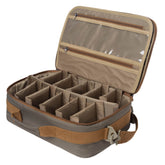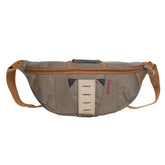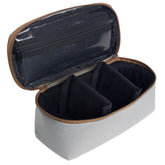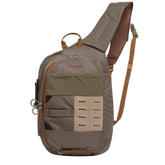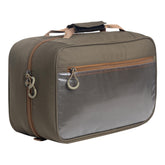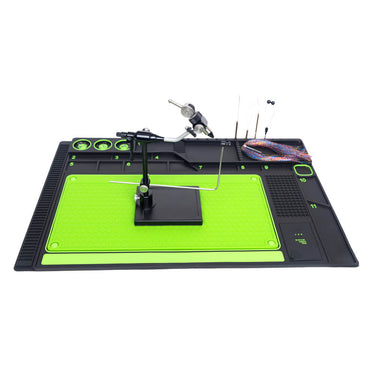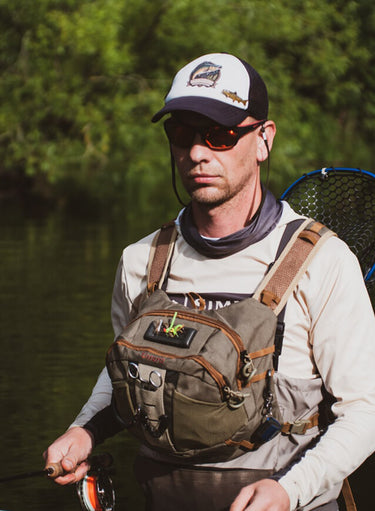Fishing Flies: The Best Assortment for Salmon and River Fly Fishing
When it comes to fly fishing, selecting the right fishing flies can significantly impact your success, especially when targeting salmon. I have found that understanding the specific flies that mimic the natural diet of salmon is crucial for a productive day on the water. The right assortment can make all the difference between a lackluster outing and a thrilling catch.

In my experience, fishing flies for rivers often need to be adaptable. I focus on flies that work effectively in varying water conditions, whether it’s fast-moving currents or calm pools. By carefully selecting the best fishing flies tailored for these environments, I ensure my chances of enticing a salmon are maximized.
Through trial and error, I have curated a list of the best fishing flies for fly fishing salmon. These flies not only attract attention but also mimic what the fish are naturally feeding on. Knowing which flies to choose can elevate any angler’s approach in the pursuit of salmon.
The Art of Fly Tying
Fly tying is a meticulous process that combines creativity and technique. Each fly I craft serves a specific purpose, whether to mimic the natural prey of salmon, trout, or steelhead. Understanding the nuances behind various fly types enhances both my fishing experience and success rate.
Salmon Fly Crafting
When I tie salmon flies, I focus on size, color, and the materials used. The classic patterns like the Green Highlander and Silver Doctor are staples in my assortment. I often use vibrant feathers and tinsel, which attract salmon effectively.
For tubing, I prefer tube flies due to their versatility. They allow me to adjust the length of the body based on water conditions. The right hook placement is essential for a proper presentation. Crafting these flies requires patience and precision, as I ensure every detail contributes to realism.
Trout and Steelhead Varieties
For trout and steelhead, my selections include nymphs, streamers, and dry flies. Patterns like the Pheasant Tail and Prince Nymph are essential for imitating underwater insects. I often pair these with brightly colored chubby chernobyl dry flies to entice surface strikes.
Elk Hair Caddis and Adams patterns also hold a prominent place in my fly box. The Blue Wing Olive is my go-to when hatches occur, as it matches key food sources. Each fly is designed to address specific conditions and fish behavior, making variety crucial in my collection.
Innovative Flies for Modern Anglers
Innovation in fly tying has led me to experiment with unique materials and techniques. Incorporating synthetic fibers in my streamer flies enhances movement in the water, attracting more fish.
Flies that mimic leech and caddis movements have proven fruitful in various waters. Using UV materials for visibility can significantly change the outcomes during low-light conditions. Adapting to trends and new findings in entomology keeps my approaches fresh and effective, ensuring I stay ahead in the art of fly tying.
Choosing the Right Fly
Selecting the appropriate fly is essential for successful fishing. Different fish species and environmental conditions dictate what flies will be effective. Understanding these factors can significantly improve chances of landing a catch.
By Fish Species
Different species of fish require specific flies. For salmon, I often use egg sucking leeches or Dolly Llama streamers. These patterns mimic the natural prey of salmon and can entice them effectively.
When targeting trout, particularly rainbow trout, I find that nymphs and dry flies work well. The Parachute Adams and Woolly Bugger are excellent choices. For coho or silver salmon, smaller, more colorful flies often yield better results due to their aggressive nature.
Reading River Conditions
Understanding river conditions is critical in fly selection. Factors such as water clarity, flow rate, and temperature can influence fish behavior. In clear water, I prefer to use smaller and less flashy flies, while murky conditions call for brightly colored patterns to stand out.
If the river is fast-flowing, I focus on streamers that can be effectively fished at various depths. Conversely, in slower sections, I might choose dry flies or small nymphs that mimic natural insects. Attention to these details improves the chances of success.
Essential Flies for Your Tackle Box
Having a well-rounded selection of flies in my tackle box is vital. Here are some must-haves:
- Egg Sucking Crystal Leech: Effective for salmon and trout alike.
- Woolly Bugger: Versatile fly that can target multiple species.
- Parachute Adams: Excellent choice for dry-fly fishing, especially for trout.
- Dolly Llama Streamer: A robust choice for attracting salmon.
By including these flies in my gear, I ensure I am ready for various fishing conditions, maximizing my opportunities for success.
Fishing Destinations and Techniques

In fly fishing, the choice of destination and technique significantly impacts success. I often focus on rivers rich in salmon and trout. Exploring unique locations and employing effective strategies is essential for a fruitful journey.
Best Rivers for Fly Fishing
Some rivers stand out for fly fishing salmon and trout. Take the River Test in England, known for its crystal-clear waters, where I often find the Solar Cascade fly effective for enticing trout.
The Helmsdale River in Scotland offers a diverse fishing experience. I rely on the Supreme Helmsdale Selection Deal, especially during the salmon run.
In the U.S., rivers like the Madison and Clark Fork are top choices. The interaction of currents here makes using streamer flies a productive method.
Alaskan Adventures
Alaska is renowned for its unparalleled fishing opportunities. Targeting salmon, the Kenai River is one of my favorite spots. The vibrant ecosystem supports rich populations of both kings and silvers.
When I fish in Alaska, I often use the Solar Willie Gunn pattern, which has proven successful in these waters.
Exploring remote locations is rewarding. I’ve found that using park shrimp flies in lesser-known streams can yield surprising results. The solitude combined with abundant fish makes for an unforgettable experience.



